The tennis courts at the Coronado Cays are Angelica Gavaldon’s second home. Gavaldon has been coaching kids and adults at her tennis academy here since 2002. In 2014, she was awarded Female Coach of the Year by the San Diego District Tennis Association.
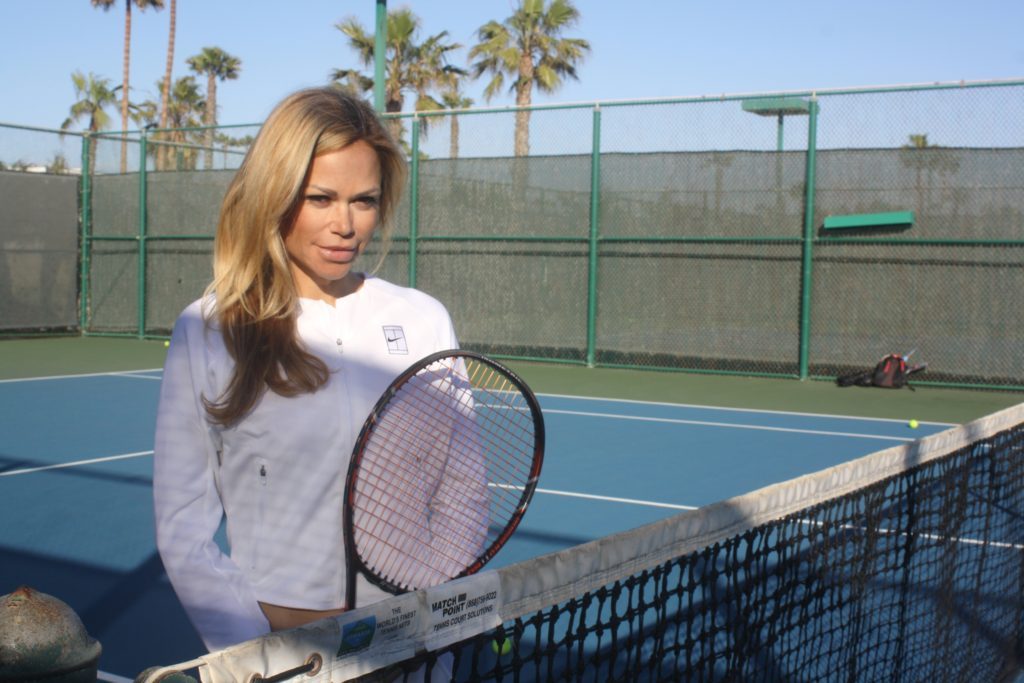
“I don’t think you can find a more beautiful place to train than Coronado and the Cays,” Gavaldon said in a recent interview.
Why is tennis Gavaldon’s domain? It’s the scope of what this Cays resident accomplished that allows her to rule over the courts in the Cays. Gavaldon is considered the best female tennis player in Mexico’s history. She was ranked 34th in the world, and played in the top tournaments including Wimbledon, the U.S. Open, and Roland Garros. She represented Mexico at the Barcelona Olympics in 1992, and in Atlanta in 1996.
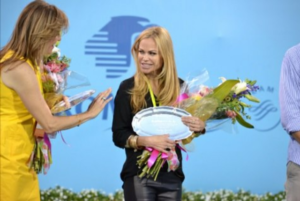
Born in El Centro, California, Gavaldon, 43, moved to the Cays in 1986 from Tijuana, Baja California, Mexico with her family: her parents Sergio and Angelica and her two siblings, older brother Angel and younger sister Adriana. Gavaldon is a single mom to Noah, her seven year old son.
Gavaldon was 12 years old and a rising tennis star when the Cays became her permanent home. She went to Sacred Heart Parish School and attended high school at Our Lady of Peace, winning CIF her freshman year. By her Sweet 16, Gavaldon’s normal student life ended. School days and common teenage activities were replaced with hours of intense training.
If you want to be just like everyone else, then sit in the classroom and just do what everyone else does. If you want to be a champion, then do what it takes, and that is not being able to do normal activities like everyone else.
~ Mrs. Angelica Gavaldon
“I was very disciplined with my studies. I would even rise sometimes before the sun to finish homework or to train. I never had an issue with this because I did not care about having a social life or hanging out with friends,” said Gavaldon. “To be honest it never appealed to me, the parties, the sleepovers, the ‘what-are-you-going-to-wear conversations.’ I found it shallow and empty. I did not understand why my friends would worry about petty things. I guess you could think I was arrogant, but I never looked down on them. I just could not relate.”
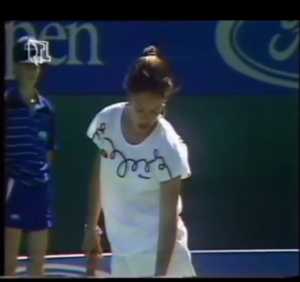
Gavaldon was an amateur player ranked 190th when she played her first Grand Slam Tournament in 1990. At age 16, wearing big hoop earrings and red lipstick, Gavaldon competed in the Australian Open. She reached the quarter finals beating 28 year-old Hana Manlikova who was 14th in the world at the time. Gavaldon then turned pro and traveled with her mom, also a tennis champ, and her school work. The high school junior hit the books each night after her matches to keep up with her studies. But playing college tennis was not her priority.
“I remember vividly telling my mom when she told me I had universities already interested in giving me scholarships, ‘I do not play tennis to become a college player; I play to be a professional,’ ” Gavaldon recalled. “I was so confident and driven.”
Today you’ll find Gavaldon holding court at the Coronado Cays tennis courts and at the Coronado Tennis Center. She also shares tips in her Health and Fitness column in Giving Back magazine. In this candid interview, Gavaldon chats about her tennis career, why she quit and got back in the game, motherhood, and life in the Cays.
Did you participate in organized sports as a kid?
“My parents always put me in everything: swimming, ballet classes, gymnastics and tennis. I loved playing piano and tennis the most but hated my piano teacher. Every time I would see his car pull up into my house I would cringe, so my mom told me to choose tennis or piano and I chose tennis, of course.”
How did you balance schoolwork and tennis in high school?
“I had a goal. I think I thought differently than most kids because I knew I wanted to play tennis and had an undying determination. So my focus and desire was different than most kids, even than most kids I train now. I think it’s something you are born with and not something that can be taught.
I wanted to train as much as possible and have an edge over every competitor. I knew if I could get my homework done at recess, or the car drive from practice, or at dinner time, I would have more time to train. I would always tell my mom, ‘I want to get to practice before everybody and want to be the last one to leave. I want to train more than anybody else in the world.’
My mother was very strict with me and always told me, ‘You are different. If you want to be just like everyone else, then sit in the classroom and just do what everyone else does. If you want to be a champion then do what it takes, and that is not being able to do normal activities like everyone else.’”
What were some of the more difficult things you overcame to play tennis at a high level?
“I was what they called ‘the new kid on the block’ with Monica Seles and Jennifer Capriati. I went to the Australian Open tournament to play the juniors, and ended up qualifying for the pro event and made it to the quarter finals. All of a sudden, within months, I had every agent calling my parents trying to sign me. I came back home top 40 in the world. I had contracts to sign, agents to please, commitments I could not get out of. People telling me what I had to do, where I had to go. One day I was in Japan, the next in Tashkent, Uzbekistan without a say. I was only 16.
I was nominated most impressive newcomer at the U.S. Open. The USTA (United States Tennis Association) wanted me to play for the US. Mexico wanted me to represent them. I felt too much pressure and I stopped loving tennis. I remember walking onto the Wimbledon grounds and my coach looked at me and said, ‘this was your dream and now you are here, stop and enjoy the moment.’ I looked at him and said, ‘I don’t think so. Let’s get to practice so I can do well here.’ I was always pushing myself which in a way took the enjoyment out.
I started questioning why there was so much attention on me… so I stopped playing for one year. The four players that I grew up with, that I was beating, all made it to the top 10 in the world. My ranking dropped to #300 because I did not want to play. Agents dropped me, I lost my contracts. I wanted to know what being normal was. My parents supported me and I went back to school. One year later I told my mom, ‘I am coming back again. I want to move to Tampa and not come back to Coronado until I achieve what I did before.’
I moved there, trained, and three months later I was top 50 in the world. I represented Mexico in two Olympics and made the quarter finals of the Australian Open again. I had my best wins after I came back. I defeated Steffi Graf who was #1 in the world at the time; I defeated Jana Novotna who was 3rd in the world. I had many victories against the best players in the world.
But you know what? I did not break top 10. I lost the momentum I had before I quit the game, but it was a great life lesson for me. Love, support and family will never leave your side no matter what, and that is the most amazing thing you can have in your life. I consider myself very lucky that I had my family to keep me grounded. Success at a young age is a blessing but you have to have the right people around you.”
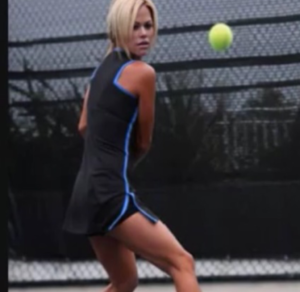
How old were you when you retired from tennis?
“26. Very young. But I started very young. I was 9 years old when I played in an international tournament. By the age of 26 I had a small injury, one that maybe I could have overcome at a different time in my career, but I was tired. I felt it in my desire to compete, but most of all to train. I was the type of player that was very intense and never had a problem giving it my all in practice. I started dreading it and knew that it was time.”
When did you realize becoming a tennis coach was the next step?
“I never wanted to be a tennis coach. I wanted to do many other things. I went into television sports in Mexico and Miami and took some time off. I took my first coaching job with Laila and Nadia Abdala, two sisters from Mexico that made me fall in love with coaching. They are amazing and ended up getting full ride scholarships to Arizona State University. I realized tennis had given me so much, and I wanted to give back and share everything that I had learned. I also realized very quickly that coaching is very different than playing, so just like when I competed I started educating myself on how to teach and be a good coach.”
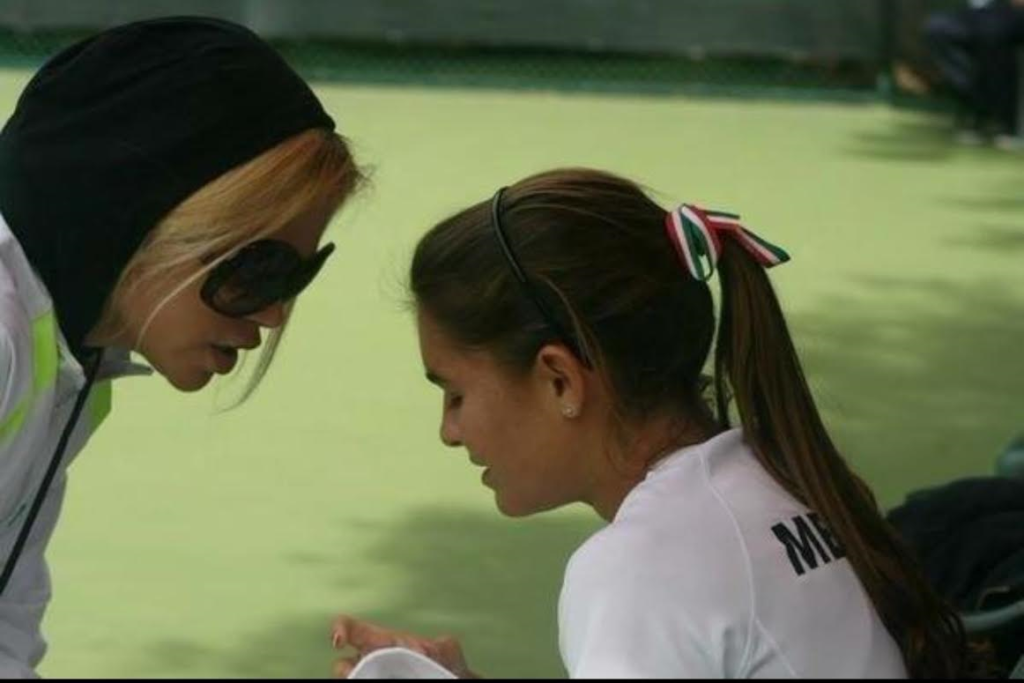
As a coach, what do you think is the most important aspect kids/athletes learn from you?
“I think the most important thing as a coach is to understand that every kid and athlete is different. They all develop at different paces; they have different personalities, so what works for one may not work for the other. It’s important also to always be honest, strict, but loving. I think that if you genuinely care and love your students they will improve drastically. Depending on the student, some learn technique, point play, others strategy, hard work, but most importantly, discipline.
I always tell them I can correct you here, but as John Wooden said, ‘discipline yourself so nobody else has to.’ If I am not there to correct you, and you keep repeating the same mistake, you know you are getting very good at the mistake.”
What do you like about living in the Cays?
“I love the Cays so much. I guess it has a lot to do with my personality. I am more of a loner, and I think the Coronado Cays is a hidden gem away from everything and the safest place to raise kids. I love that we have the beautiful Loews next to it, and that we can just walk to the beach or the park. It’s a huge blessing also to be raising my son Noah here, and to be able to just walk to my work. I consider myself very fortunate.”
Gavaldon traded her signature hoop earrings for oversized sunglasses a while ago. And though she practically lives at the tennis courts, surprisingly this is not her preferred place in the Cays. So where does Gavaldon love to hang out in the Cays?
“My home is my favorite spot. Haha!” Gavaldon revealed with a chuckle.




